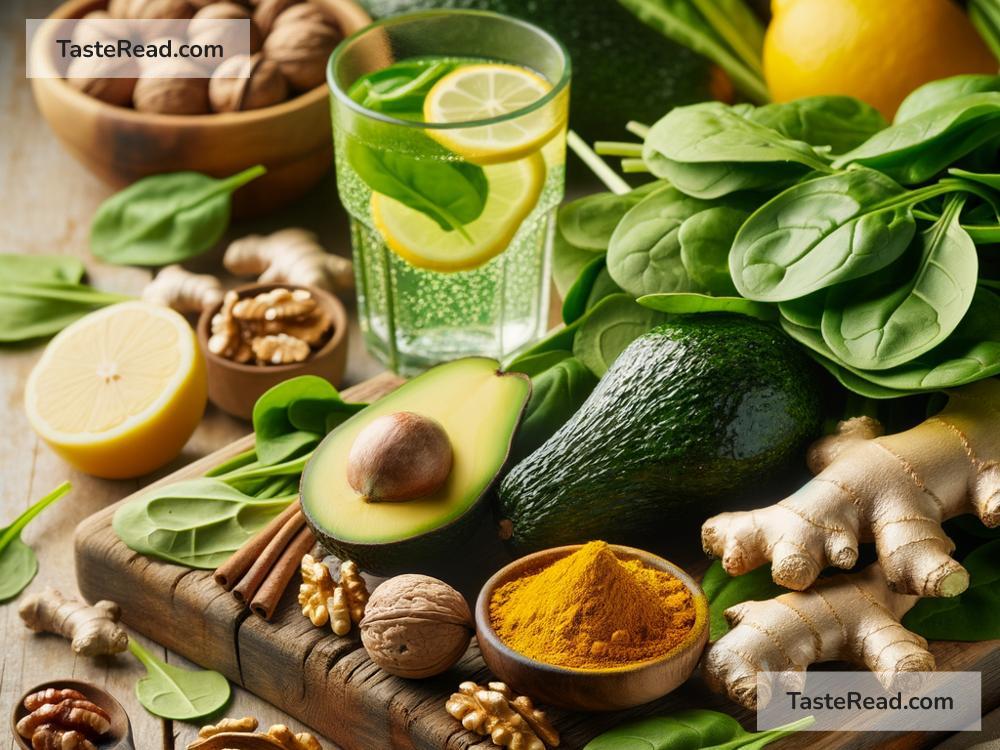Foods That Help Reduce Stiffness and Keep You Moving Freely
Feeling stiff and inflexible can make everyday activities like walking, bending, or even sitting uncomfortable. Stiffness in the body is often caused by inflammation, lack of movement, or conditions like arthritis. Thankfully, eating the right kinds of food can help reduce stiffness and improve flexibility. This article explores foods that fight inflammation and promote joint and muscle health so you can stay on the move.
Understanding Stiffness and Inflammation
Before diving into specific foods, let’s briefly talk about stiffness. Stiffness often occurs when the joints, muscles, or connective tissues in your body feel tight or rigid. Inflammation is a key factor in this process. When your immune system detects a problem, like an injury or illness, it sends white blood cells to the site to start healing. However, chronic inflammation—ongoing inflammation—can lead to stiffness and pain in the joints and muscles.
Luckily, many foods have natural anti-inflammatory properties that can help reduce stiffness. Combined with regular movement, a healthy diet can make a big difference in how your body feels.
Top Foods to Reduce Stiffness
1. Fatty Fish
Fatty fish like salmon, mackerel, sardines, and tuna are excellent sources of omega-3 fatty acids, which are powerful anti-inflammatory compounds. These healthy fats can help reduce stiffness and joint pain caused by inflammation. Omega-3s also promote healthier joints by protecting cartilage.
How to add it to your diet: Try baked salmon for dinner or add canned sardines to a salad.
2. Ginger
Ginger is a widely-used spice that has anti-inflammatory properties thanks to compounds called gingerols. Consuming ginger regularly can reduce muscle soreness, joint pain, and stiffness over time.
How to add it to your diet: Brew fresh ginger tea, or use grated ginger in stir-fries or smoothies.
3. Turmeric
Turmeric contains curcumin, a potent anti-inflammatory compound that is known to help reduce joint stiffness and pain, especially for those with arthritis. Studies show turmeric may be as effective as over-the-counter anti-inflammatory medicines for some people.
How to add it to your diet: Sprinkle turmeric into soups, stews, or rice dishes. If you’re using it for health reasons, pair it with black pepper to enhance absorption.
4. Leafy Greens
Spinach, kale, and other leafy greens are packed with vitamins and antioxidants that help fight inflammation. Leafy greens are high in vitamin C, which boosts collagen production (important for healthy joints), and vitamin E, which protects the body against inflammation.
How to add it to your diet: Toss spinach into smoothies, make kale chips, or use leafy greens as a base for a salad.
5. Berries
Berries like blueberries, strawberries, and raspberries are rich in antioxidants called anthocyanins. These antioxidants help combat inflammation and reduce stiffness by preventing damage to your tissue. Plus, they’re sweet and refreshing!
How to add it to your diet: Eat berries as a snack, mix them into yogurt, or sprinkle them over oatmeal.
6. Olive Oil
Olive oil, especially extra virgin olive oil, contains healthy fats and anti-inflammatory compounds like oleocanthal, which have similar effects to pain-relief medications. It’s great for reducing stiffness and keeping the joints lubricated.
How to add it to your diet: Use olive oil as a salad dressing or drizzle it over cooked vegetables.
7. Nuts and Seeds
Walnuts, almonds, chia seeds, and flaxseeds are rich in healthy fats, fiber, and magnesium. Magnesium is particularly helpful for relaxing muscles and reducing stiffness, while the omega-3s in nuts and seeds offer anti-inflammatory benefits.
How to add it to your diet: Snack on a handful of nuts or sprinkle chia seeds on yogurt.
8. Green Tea
Green tea is loaded with antioxidants called polyphenols, which help lower inflammation and protect joint health. It’s also a soothing drink that can ease stress, which might contribute to muscle tension.
How to add it to your diet: Swap your regular tea or coffee for a cup of green tea in the morning or afternoon.
9. Whole Grains
Unlike refined grains like white bread or white rice, whole grains such as quinoa, oats, and brown rice have anti-inflammatory properties. They are rich in fiber, which helps lower levels of C-reactive protein (CRP), a marker of inflammation in the body.
How to add it to your diet: Use whole grains as a side dish or cook oatmeal for breakfast.
10. Avocados
Avocados are a superfood rich in healthy fats, fiber, and anti-inflammatory compounds. They also contain nutrients that promote joint health, such as potassium and vitamin E.
How to add it to your diet: Add diced avocado to salads, spread it on toast, or use it in smoothies.
Tips for a Stiffness-Reducing Diet
While certain foods help reduce stiffness, it’s also important to avoid foods that can make inflammation worse. Limit your intake of sugary snacks, fried foods, and processed meats, as these can increase inflammation.
In addition to eating anti-inflammatory foods, stay hydrated by drinking plenty of water and maintain a balanced diet. Regular exercise, even light stretching or walking, can complement your efforts to reduce stiffness.
Conclusion
Stiffness in joints and muscles can make life harder, but the food you eat can play a big role in improving flexibility and reducing pain. Including anti-inflammatory foods like fatty fish, turmeric, ginger, and leafy greens in your diet can ease stiffness and keep you feeling active and healthy. Combine a healthy diet with movement and hydration, and you’ll be well on your way to a more flexible, comfortable body!
Next time you feel stiff, skip the pain pills and head to the kitchen instead—your body will thank you.


